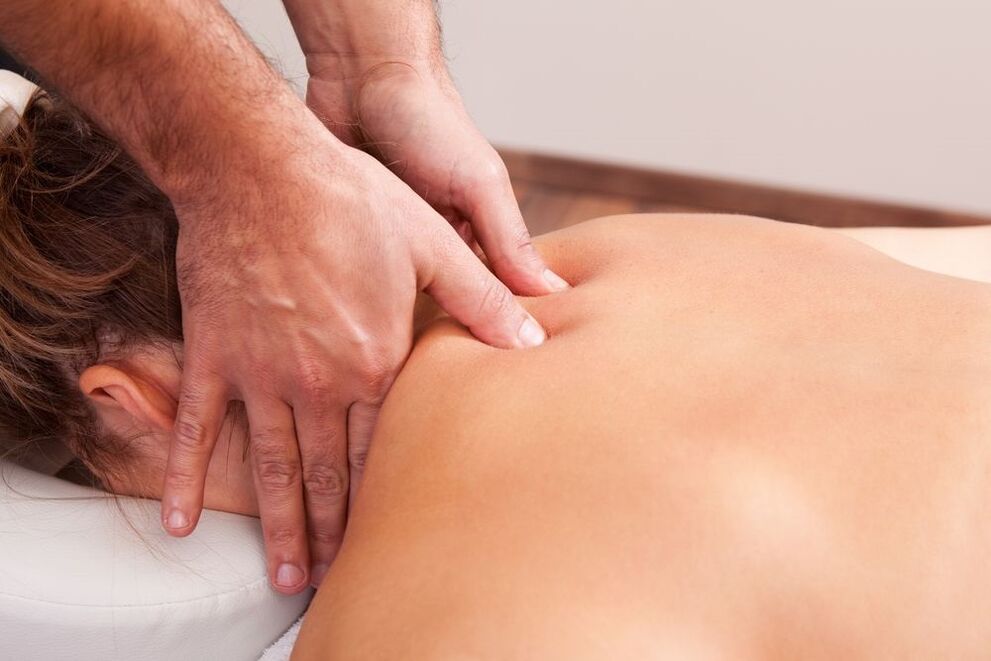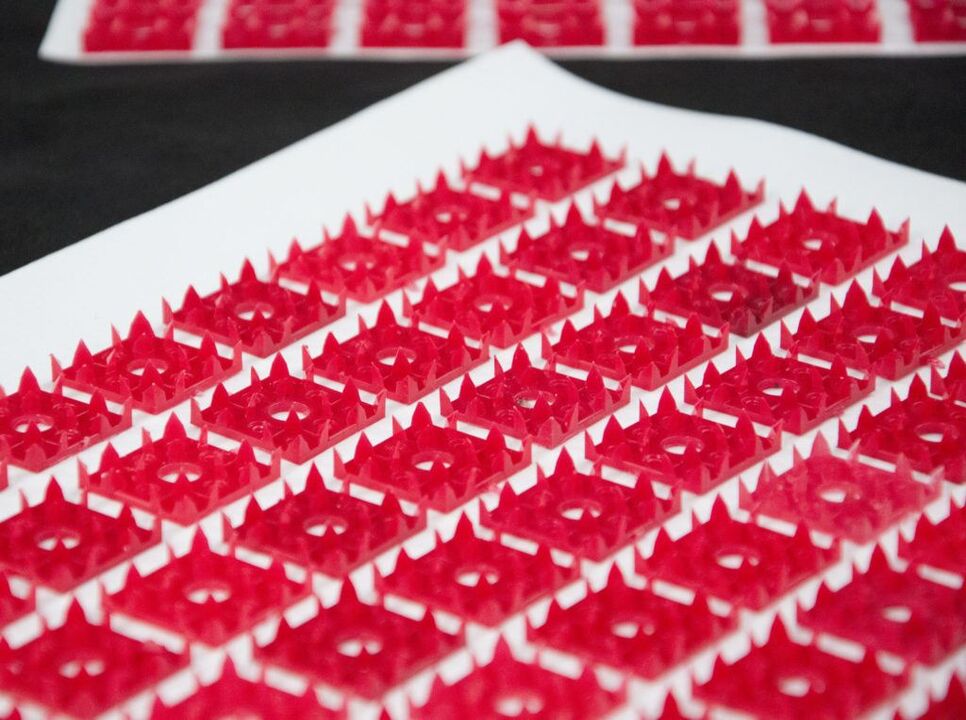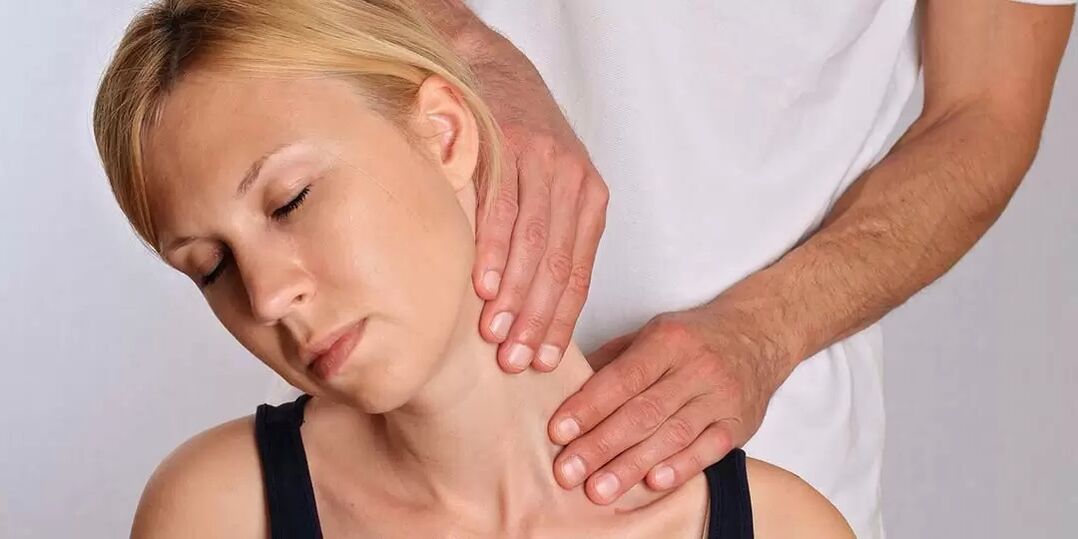
Cervical osteochondrosis is a type of dystrophic change in the cervical intervertebral discs.
Not only the discs themselves are negatively affected, but also the vertebrae, soft and cartilaginous tissues. The main feature of the cervical region is that its vertebrae do not have the most reliable structure compared to the other regions, which makes this area very vulnerable. The vertebrae are located close to each other and to the arteries that supply the human brain.
If the vertebrae move, there is a high probability of compression of the nerve bundles and arteries, which will inevitably lead to the formation of a hernia between the vertebrae and the protrusion, i. changes in the structure of the vertebral plate.
Which?
Osteochondrosis of the cervical spine is a degenerative-dystrophic disorder of the cartilage discs that results in damage to the joints of the cartilage discs, vertebrae, and cervical spine, and a decrease in the height of the cartilage discs. . The disease progresses if left untreated and can lead to headaches, poor circulation and even hernia. Like osteoporosis, the disease is caused by a violation of mineral metabolism, which results in weakening of the bones and joints.
Why does osteochondrosis appear?
Although traditional medicine considers degenerative lesions of the cartilage discs in the cervical spine to be a disease, it is only a manifestation of deeper abnormalities in the body for osteopathy.
Thus, the real causes of cervical osteochondrosis are:
- Muscle cramps. . . Spasmodic reactions of the muscles of the back, chest, pressure can lead to certain parts of the body being very tense. As a result, the general equilibrium position of the body is upset, which causes a change in the position of the spine. Deformities can affect the cervical region or other parts of the spine, causing osteochondrosis of the chest, neck, and lumbar regions.
- Bad posture. . . Scoliosis, hunched back, round back, kyphosis, and other postural disorders, even if minor, cause severe spinal imbalance. As a result, the load on the intervertebral discs is unevenly distributed, causing their deformation and increased wear. The vertebrae begin to converge, causing a violation of neural processes, and cervical osteochondrosis develops fairly rapidly. Postural disturbances caused by changes in the natural position of the ribs have similar consequences.
- Tanning disorder. . . Decreased sensitivity of the nerve roots leads to pathological changes in their structure, as a result of which the displacement and deformity of the cervical vertebrae remains unnoticed by the patient. After all, pain is lacking due to sensitivity disorders.
- Diseases of the internal organs. . . Improper position of the internal organs, displacement and subsidence due to various dysfunctions leads to a disturbance of the general balance of the body. As a result, it sharply affects the position of the spine - the cervical, lumbar vertebrae move and deform, leading to the right type of osteochondrosis.
- Violation of the blood supply. . . Because the discs have no direct contact with the circulatory system, they receive nourishment from the surrounding tissues. Violation of the blood supply to the cervical spine leads to the fact that the cartilage discs do not receive enough fluid for rehydration (to restore shape due to the absorption of moisture), to regenerate the cartilage tissue. As a result, their wear accelerates, reducing the distance between the vertebrae of the cervical spine, leading to osteochondrosis.
Platoon
The treating physician should determine the extent of osteochondrosis of the neck based on the medical history and examination of the patient. There are only four levels:
- First degree. . . The disease is in the bud, the patient has mild neck pain which may be stronger if the person starts to turn their head.
- Secondary. . . The patient may complain of very intense pain in the cervical spine, which can be localized in the upper extremities. The clinical picture shows that at this stage in the development of the disease, pinching of the nerve bundles is observed, causing intense pain. Headaches, weakness, and general malaise may also be observed.
- Third degree. . . The pain becomes almost incessant, radiating to the shoulder or arm. Some patients are diagnosed with disc herniation, which leads to loss of sensation in the upper extremities. During the examination by the doctor, the mobility of the cervical spine is noticeably reduced and it causes pain to the touch.
- Fourth grade. . . At this stage of the disease, the intervertebral disc is almost completely destroyed. Connective tissue appears in its place, leading to a deterioration in the patient's condition. He begins to feel more pain, feels noise in his head, and is poorly informed in space. This suggests that the artery is stuck, which disrupts the brain’s natural nutrition.
First signs
How does osteochondrosis of the cervical spine manifest itself:
- radical syndrome - there is pain in the background of the compression of the nerve endings, which spreads from the neck to the shoulder blades and forearms, covering the front wall of the chest;
- muscle weakness in the arms, noticeable swelling of the neck;
- a characteristic crackling is heard when the head is moved;
- weakness, chronic fatigue, drop in blood pressure;
- lack of coordination, often dizziness, seizures accompanied by nausea and vomiting;
- impaired vision and hearing, noise, tinnitus;
- numbness of the limbs, tongue;
- common migraines;
- In women aged 45-65 years, pain, numbness and tingling in the upper extremities occur during sleep, and seizures may recur several times a night.
Symptoms of osteochondrosis of the cervical spine
Important symptoms of cervical osteochondrosis are dizziness, headache, high blood pressure.
Diagnosis of the disease is difficult, pain sometimes does not occur, symptoms disappear, and the uncontrolled use of strong painkillers masks the signs of the disease. A patient who does not feel pain considers himself or herself healthy, and this lasts until irreversible processes develop in the tissues of the neck joints.
Headache with osteochondrosis of the neck
The most common causes of headaches in the pathology we have described are:
- Vascular spasms of the brain;
- pinched nerve roots;
- Reflex increase in intracranial pressure.
You may feel the pain be rapid, constant, throbbing and dull.
Dizziness with cervical osteochondrosis
Dizziness may be caused by:
- Inflammation of the middle or inner ear;
- Vascular spasms of the brain;
- Disturbances in the transmission of nerve impulses;
- Problems with the vestibular device;
- Diseases of the cardiovascular system.
There are no clear criteria for dizziness in osteochondrosis. However, there are systemic and non-systemic dizziness, these are obvious differences.
It is recommended that you be aware of the differences between systemic and non-systemic dizziness to help determine the causes of the unusual condition on your own:
- Systemic dizziness is a sensation of circular movement of surrounding objects or the body as a result of disruption of the vestibular apparatus, visual analyzers, and receptors in the joints, muscles, and epidermis (osteochondrosis of various etiologies);
- Non-systemic dizziness is a feeling of dizziness, a feeling of dizziness, a feeling of insecurity in being upright. In the case of non-systemic dizziness, there is no sense of circular rotation, and this is a significant difference between the symptoms compared.
A person experiencing this type of dizziness should be examined by an experienced doctor, especially a neurologist, or (if ear and nose throat disease is suspected) an otolaryngologist.
The cause of emergency hospital treatment that is not related to osteochondrosis of the cervical spine is the identification of the patient (excluding dizziness) with the following symptoms:
- Paralysis of the facial muscles and numbness of part of the shoulder girdle;
- Severe headache in the background of deteriorating health;
- Movement coordination disorders;
- Loss of consciousness or extinction.
Blood pressure in cervical osteochondrosis
The association between cervical osteochondrosis and an increase in blood pressure has long been known. There are important nerve endings and blood vessels in the cervical vertebrae.
The distinguishing feature of hypertension in cervical osteochondrosis is a combination of the following symptoms:
- Headache;
- Pain in limbs and chest;
- Decreased sensitivity in the neck;
- Occurrence of pressure rises after stress, muscle tension, prolonged uncomfortable posture, and other similar situations.
These signs should be considered when self-differentiating hypertension of various origins.
A sharp rise in blood pressure and a rapid deterioration in health are the basis for seeking emergency medical help.
Osteochondrosis syndromes
Osteochondrosis consists of the following syndromes:
- Spine. . . It is also called vertebral, which indicates that bones and cartilage tissue are involved in the pathological process. This leads to the development of such symptoms: restriction of motor activity in the neck, pain when turning, radiological changes in the image of the cervical spine. The simultaneous appearance of these signs means vertebral syndrome. Similar clinical symptoms are observed in myositis (muscle tissue pathology) and painful movements are associated with many other pathologies.
- Heart syndrome. . . A burning sensation and shortness of breath appear in the chest area. The person will feel a rapid heartbeat, become tired and irritable. This picture is also characteristic of cardiac pathologies such as angina pectoris, coronary syndrome, myocardial infarction. An accurate conclusion about the causes of such symptoms can be drawn after the patient undergoes an ECG.
- Radicular syndrome. . . The cervical region innervates 8 pairs of nerves, each with roots - the place where the nerve exits the vertebrae. When involved in osteochondrosis, the patient experiences a decrease in sensitivity or, conversely, severe pain. There may be numbness in the cervix, even painful, decreased sensitivity of the tongue, behind the ear, pain in the supraclavicular region. Sometimes violation of swallowing, movement of the belt of the upper limb, numbness of the fingers.
Diagnostics
If there are clear signs of osteochondrosis of the neck on the face, your doctor will prescribe certain methods to ensure that the diagnosis is correct:
- X-ray of the cervical spine. This method is useful in the early stages of the disease, but may be useless in advanced forms.
- CT (computed tomography). It allows you to view the structural changes in the vertebrae, but with this method it is impossible to determine the size of the hernia between the vertebrae.
- MRI. This is the most effective diagnostic method for determining cervical osteochondrosis. The size of the hernia between the cartilage discs and the degree of their development can be determined.
- Your doctor may also order a duplex test to see if your arteries are working properly.
Complications of the disease
What are the dangers of cervical osteochondrosis:
- common migraine attacks;
- arrhythmia, atherosclerosis;
- protrusion, intervertebral hernia, bony outgrowths of the vertebrae;
- severe pathologies of the brain;
- narrowing of the lumen of the vertebral artery, leading to VSD, cerebral hypertension, disability;
- spinal cord.
First aid at home with worsening osteochondrosis
Painkillers can be used for severe pain. If painkillers do not bring relief, NSAIDs can be taken.
Often, "distraction" devices are used, such as the pepper patch, which does not heal, only warms the inflamed area and distracts from the pain. In the case of edema in the area of inflammation, the patient may drink an herbal infusion or diuretic for 3-4 days. Can osteochondrosis be cured by such methods? These measures are only temporary and you should see a doctor to treat the causes.
How to treat cervical osteochondrosis?
In the early stages of development, osteochondrosis can be cured without medication, it is sufficient to review the diet, the daily system, and perform special exercises on a regular basis. In advanced forms of the disease, effective treatment is only possible with the use of various medications that help stop the degenerative changes in the vertebrae.
The complex of therapeutic measures should include physiotherapy - electrophoresis with drugs, ultrasound, magnetotherapy, laser therapy. These methods help cope with pain, inflammation, swelling of tissues, improve metabolic processes and blood circulation.
Drug treatment
The main methods of treating osteochondrosis of the cervical spine are medication, physiotherapy, massage of the neck-collar zone, and therapeutic practices of cervical osteochondrosis. The main groups of medicines used to treat the disease are:
| Name | Operating principle |
| Non-steroidal anti-inflammatory drugs (NSAIDs). | They reduce pain, help relieve aseptic inflammation and the edema of the root of the injured nerve. |
| Drugs that improve the rheological properties of blood and blood flow. | It improves the nutrition of damaged nerve roots and improves the blood supply to the brain. |
| B vitamins. | Improves metabolic processes in nerve tissue. |
| Muscle relaxants. | These are medications that relieve muscle cramps. |
| Chondroprotectors. These are glucosamine and chondroitin. | These are drugs that restore cartilage tissue, including damaged intervertebral disc. |
When taking tablets for osteochondrosis, it should be remembered that the effect of medication with the tablets will only be significant if it is combined with other methods, including exercise. It should also be noted that the treating physician should prescribe the treatment for the disease based on its stage and other signs.
Many doctors consider injection therapy for cervical osteochondrosis to be effective because it allows for a faster effect on nerve endings and causes minimal side effects. However, vitamins should be taken in tablet form as there is no difference in assimilation, but injections can be painful.
Injections used for treatment:
- intramuscular injections have a general strengthening and anti-inflammatory effect;
- The blockades are injected directly into the affected area, resulting in a rapid effect.
Ointments and gels for external use
This is the most readily available drug group for home use. They can be divided into anti-inflammatory, warming and analgesic.
Not all ointments are effective in cervical osteochondrosis, and due to their availability, they are sometimes used unnecessarily and without considering the specifics of the pathogenesis. You should be examined by a doctor before using any medication.
Practice therapy
Physiotherapy for cervical osteochondrosis should be performed without acute exacerbation. The greatest effectiveness of this technique is achieved during the healing period. There should be no discomfort and pain during the execution of the complex!
| Exercise # 1 | Lying on your stomach, place your hands on the floor, lift your head and torso, back straight. Stay in this position for 1-2 minutes. Slowly lower yourself to the floor. Repeat 2-3 times. |
| Exercise 2 | Lying on your stomach, extend your arms along your body, turn your head to the left, try to touch the floor with your ears, then turn your head to the right. Repeat 6-7 times in both directions. |
| Exercise # 3 | In a sitting position, while inhaling, bend forward and try to touch your chest with your head, then when you exhale, bend back and tilt your head back. Repeat 10-15 times. |
| Exercise 4 | While sitting, place your palms on your foreheads, your palms on your foreheads, and your foreheads on your palms. Continue this exercise for 30 seconds. Repeat 2-3 times. |
| Exercise 5 | Slowly rotate your head first in one direction and then in the other. 10 rotations per direction. Watch out for dizziness. When it appears, the exercise stops. |

Massage for cervical osteochondrosis
The massage should be done carefully and without exertion. An inexperienced, unprofessional massage can end in failure. The movements should cover the neck region, the collar area and part of the back. The massage is performed in a supine position, in an extreme sitting position.
The techniques are based on the following techniques:
- To caress. Effect on the surface layers of the skin. With the palms or fingertips from the head down to the upper third of the middle of the back. Caressing from the base of the neck can also be a zigzag pattern;
- Squeeze. Effect on the deep layers of the skin in the upper third of the back. The fingers (thumb and forefinger) make movements across the neck that grab the skin, reminiscent of squeezing. This is done with caution, with tissues close to the vertebrae not affected;
- Trituration. The purpose of the procedure is to warm the skin and increase blood flow in the neck area. This is done with extreme caution. Effects on vertebral protrusions are not permitted. Rubbing can be replaced by movements reminiscent of sawing or circular caressing;
- Kneading. It is of limited significance as it affects very deep lying tissues, which may exacerbate the pathology.
Self-massage of osteochondrosis of the neck is performed while sitting in a comfortable position. Methods of stroking, circular rubbing of the neck or shoulders are used. It is advisable to combine the method of self-massage with rubbing with various ointments that increase blood flow and relieve pain in the kneaded area.

Physiotherapy
The patient should undergo physiotherapy while taking the medication. They increase the effectiveness of medications, helping to repair joints and intervertebral discs.
- Electrophoresis - the ions of the anesthetic drug penetrate the sore spot under the influence of an electric current.
- Laser therapy - has anti-inflammatory properties, guarantees the improvement of blood circulation when exposed to light.
- Magnetic therapy - relieves tissue swelling, has an analgesic effect.
- Ultrasound - improving metabolic processes, relieving pain, relieving inflammation in damaged areas.
Many procedures are used in the form of physiotherapy. Your doctor will prescribe treatment based on the indications and the absence of contraindications.

Folk remedies
Alternative treatments should be used as an adjunct to drug therapy and physical education, non-traditional methods do not help to completely get rid of the disease.
What to do with cervical osteochondrosis at home:
- Pour boiling water over a fresh horseradish leaf, cool slightly, fix the inside to the neck, fix with a thin natural cloth. The procedure is done before going to bed, leaving the compression overnight.
- Grate the raw potatoes on a fine grater, mixing them in equal proportions with warm liquid honey. Use the mixture for compaction, the procedure should be done 1-2 times a week.
- Mix a raw egg with 100 ml of sunflower oil, 20 ml of vinegar and 20 g of flour, remove the mixture in a dark place for 48 hours, remove the film from the surface. Lubricate the inflamed area before going to bed and store it in a refrigerator.
- In May, collect pine buds up to 2 cm long, cut into thin slices, fold in a dark glass container. Take 2 parts sugar for 1 part of the raw material, remove the medicine in a dark place for 2 weeks. Drink 5 ml of the mixture three times a day, do not swallow immediately, keep in your mouth for 2-3 minutes. The duration of the course - 15-20 days, repeat 2-3 times a year.
- Grind 150 g of peeled garlic and 400 g of blueberries, place the mixture in a glass jar, add 800 ml of honey after 24 hours, mix. Take 5 ml of the medicine three times a day before meals.
To cope with the severe pain, remove the excess salts with a cabbage leaf smeared with honey, fasten the compress around the neck with a warm scarf, leave overnight.
Applicator
The use of applicators is one of the therapeutic methods for spinal diseases, including osteochondrosis.
The effect of the device on the cervical spine normalizes metabolic processes, relieves pain, increases muscle tone, improves blood circulation, increases the conductivity of nerve tissue, and so on.

Manual therapy
Manual therapy is based on the principle of restoring mobility between motor functions and vertebrae.
Initially, the manipulations consist of a mild relaxing massage, then the doctor exerts more and more force, acting on the vertebrae by pressing and turning the neck.

Surgery
The spine is the basis of the entire human body. In diagnosing any pathology associated with the spine, those skilled in the art will seek to therapeutically eliminate it. Any surgery on the spine is life-threatening.
In the case of osteochondrosis of the neck, surgery is permitted in the following indications:
- intervertebral hernia, spondylolisthesis, spinal stenosis;
- lack of therapeutic results for more than six months;
- formation of osteophytes.
Modern medicine offers a number of methods to perform surgery that pose minimal risk to a patient’s health and life.
Prophylaxis
Cervical osteochondrosis is a disease that develops primarily through a poor lifestyle. Accordingly, disease prevention is a healthy lifestyle.
The risk of developing SHO can be reduced if:
- excludes provocative factors;
- Regular exercise;
- do not engage in strenuous physical activity;
- get rid of bad habits;
- try to be as nervous as possible;
- eat right.
Adherence to preventative measures will help speed up the healing process and eliminate the likelihood of relapse. Continuous adherence to prevention is recommended for the elderly and those with hereditary predispositions. Adhering to a diet and performing simple exercises will definitely bring positive results. Yoga and swimming are also useful.



















